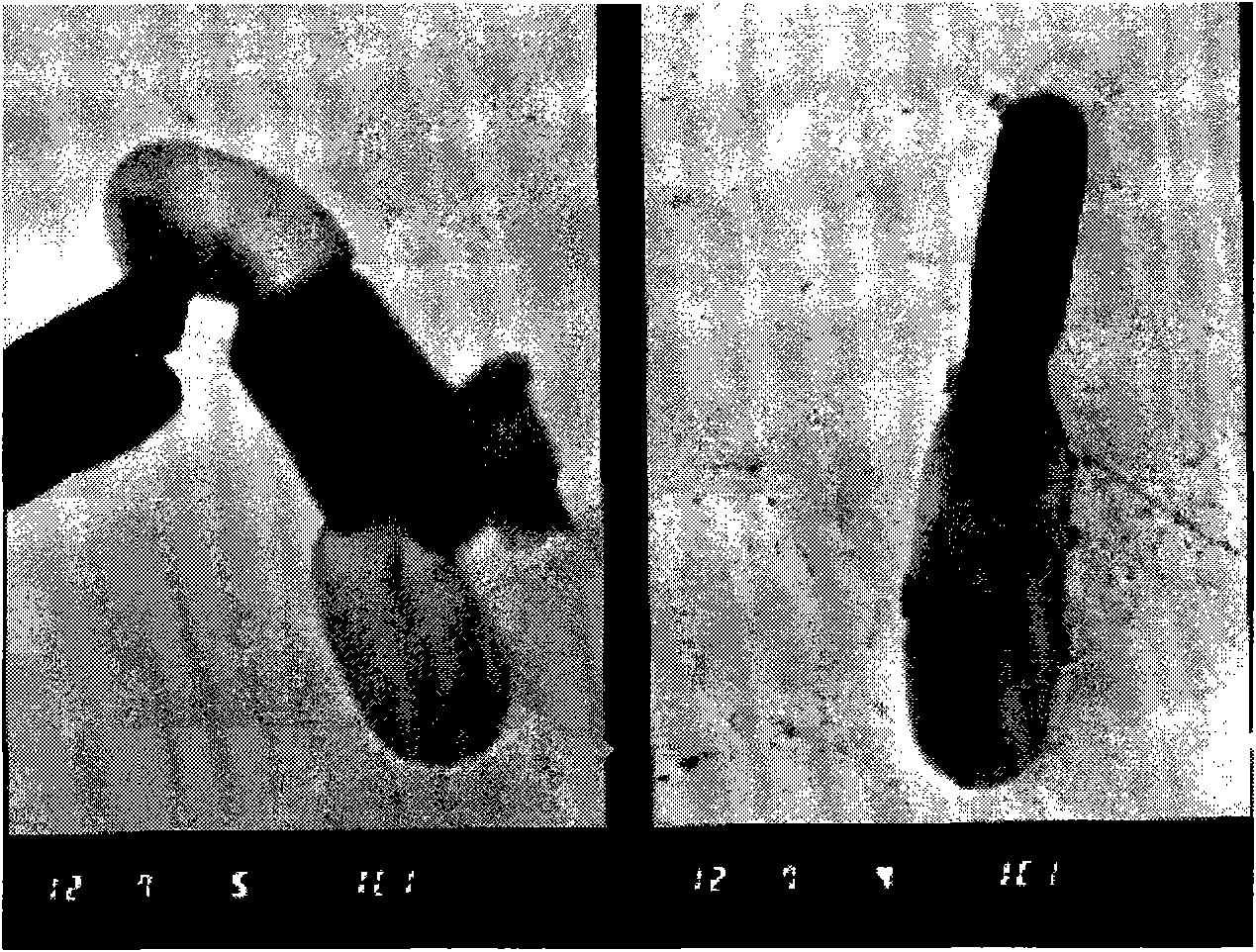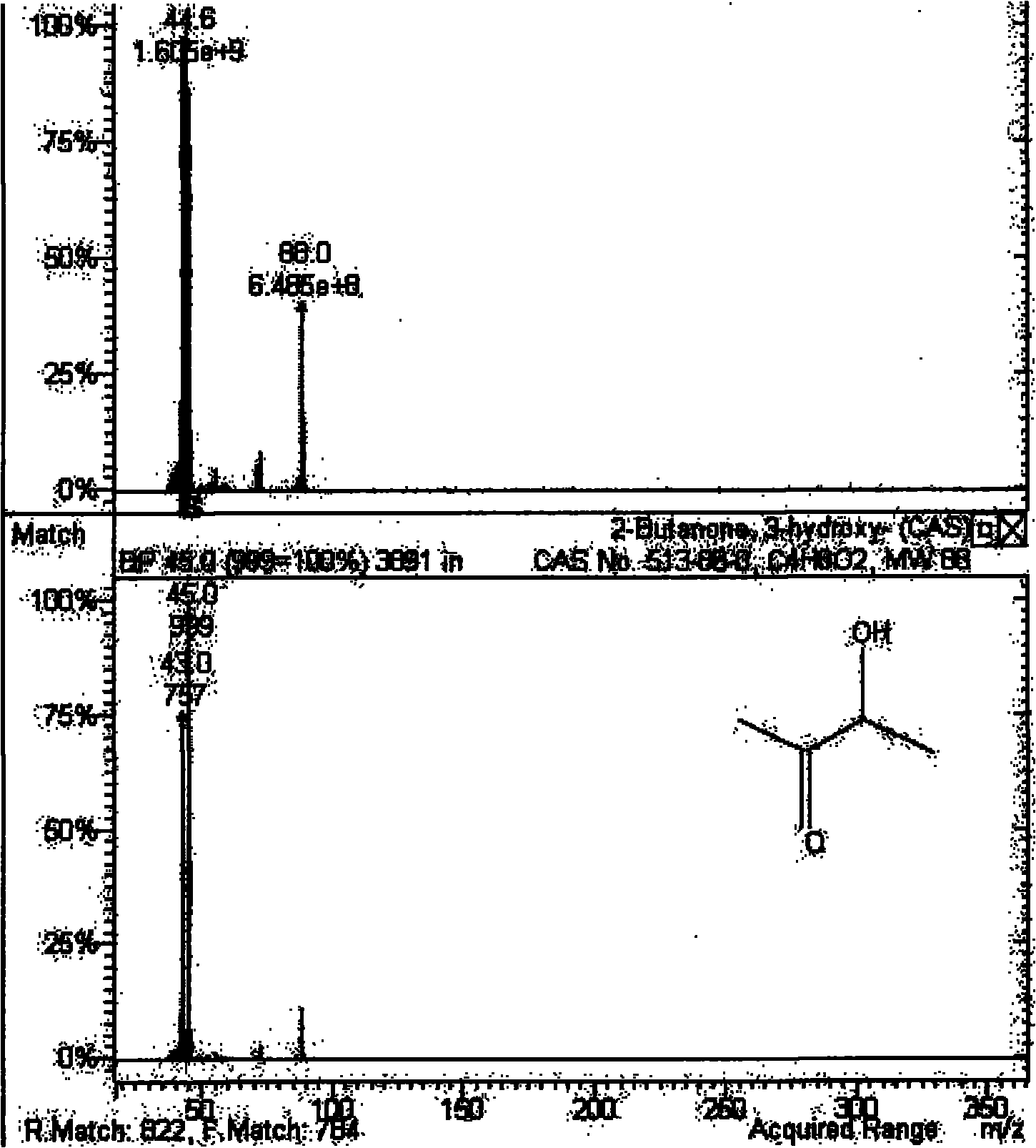Breeding of microbial strain for producing 3-hydroxy-2-butanone by fermenting substrate glucose
A technology of glucose and fermentation medium, applied in microorganism-based methods, microorganisms, fermentation and other directions, can solve the problem that 3-hydroxy-2-butanone is difficult to develop on a large scale, product quality is difficult to achieve, product yield and yield Low problems, to achieve the effect of being conducive to environmental protection, easy to control, and high utilization of raw materials
- Summary
- Abstract
- Description
- Claims
- Application Information
AI Technical Summary
Problems solved by technology
Method used
Image
Examples
Embodiment 1
[0028] Embodiment 1: the screening of bacterial strain:
[0029] Screening of target strains: Enrich the collected samples in seed medium (glucose 20g / L, yeast extract 5g / L, peptone 10g / L, sodium chloride 10g / L pH 7.0), shake at 37°C 150r / min Bed 10h, take different dilutions to spread and culture. Pick a single colony on the plate separation medium (yeast extract 5g / L, peptone 10g / L, sodium chloride 10g / L, agar powder 18g / L pH 7.0) for streak separation, culture at 37°C for 1d-2d, and microscopic examination , the strains to be tested were preserved in the slant preservation medium for primary screening.
[0030] The seeds cultivated to the logarithmic phase with the seed medium were added to the fermentation medium containing 15% glucose according to the inoculation amount of 5%, and then placed under the condition of 37°C and 150r / min for shaking culture for 130h. The fermentation broth was collected, centrifuged, and the supernatant was taken for detection.
Embodiment 2
[0031] Embodiment 2: Qualitative detection of 3-hydroxyl-2-butanone:
[0032] Take 2ml of the supernatant, extract with 2ml of ethyl acetate, and then use GC-MS to identify whether the extract contains 3-hydroxy-2-butanone. GC-MS detection conditions: The temperature control program of the chromatographic column is as follows: first, keep warm at 60°C for 1min, then raise the temperature to 90°C at a rate of 6°C / min and keep it for 2min, and finally increase the temperature at a rate of 30°C / min. To 180 ℃, constant temperature 2min. The temperature of the injection port is 250°C, the injection volume is 1 μL, the carrier gas is high-purity helium, the flow rate of the carrier gas is 1.2mL / min, and the detector temperature is 240°C;
[0033] TraceMS mass spectrometry conditions: EI+ bombardment source, full scan mode, scan mass range of 30-500amu, emission current of 200μA, electron energy of 70eV, mass spectrometry detection spectrum library is NIRT98 spectrum library;
[00...
Embodiment 3
[0035] Example 3: Detection of the ability of the strain to synthesize 3-hydroxy-2-butanone:
[0036] According to the method of Example 1, the activated seeds are added to the fermentation medium containing 15% glucose according to the inoculum size of 5%. After culturing for 130 h under the condition of 1 min, the fermented liquid was collected, centrifuged, and the supernatant was taken to determine the content of 3-hydroxy-2-butanone in the fermented liquid by gas chromatography. Shimaduz gas chromatograph, chromatographic column: PEG-20M 30M I.D.0.32mm; headspace sampling, sample equilibrium temperature: 70°C; equilibrium time: 30min; injection temperature: 200°C; detector temperature: 250°C ℃; temperature program: 40°C (5min)---180°C, temperature rise 10°C / min, sample retention time is 12.7min.
[0037] 3-Hydroxy-2-butanone standard GC chart Image 6 As shown, Bacillus subtilis JNA takes glucose as the substrate 130h fermentation broth GC spectrum as Figure 7 shown;
...
PUM
 Login to View More
Login to View More Abstract
Description
Claims
Application Information
 Login to View More
Login to View More - R&D
- Intellectual Property
- Life Sciences
- Materials
- Tech Scout
- Unparalleled Data Quality
- Higher Quality Content
- 60% Fewer Hallucinations
Browse by: Latest US Patents, China's latest patents, Technical Efficacy Thesaurus, Application Domain, Technology Topic, Popular Technical Reports.
© 2025 PatSnap. All rights reserved.Legal|Privacy policy|Modern Slavery Act Transparency Statement|Sitemap|About US| Contact US: help@patsnap.com



